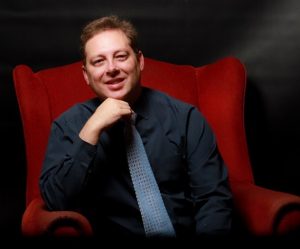SAIP 2025
Plenary SPEaker
Title: Gamma-ray Pulsars: Puzzles and Progress

Speaker: PROFESSOR CHRISTO VENTER
Title: Gamma-ray Pulsars: Puzzles and Progress
Abstract
Pulsars are spectacular, enigmatic, astrophysical objects that emit regular pulsations across the electromagnetic spectrum. Moreover, they are thought to be factories of cosmic rays as well as gravitational waves upon merging events, making them true multi-messenger objects. They are Nature’s exquisitely accurate timepieces, being the super-dense remnants of supernova explosions. They are extremely stable rotators with magnetic fields that are a trillion times stronger than that of Earth. These fascinating attributes make them valuable laboratories to test theories of gravity, nuclear physics, plasma physics, beaming effects, quantum mechanical effects, and radiation physics in relativistic, strong-field regimes that cannot be replicated on Earth. In the gamma-ray energy band, there has been a number of revolutionary discoveries, including the milestone detection of 300 high-energy pulsars; the detection of pulsations from the famous Vela pulsar up to 20 TeV and the Crab pulsar up to 1 TeV; mode-changing phenomena observed in the Gamma Cygni pulsar; and the existence of a pulsar fundamental plane that relates gamma-ray luminosity, spectral cut-off energy, surface magnetic field, and spin-down luminosity, to name a few. There has also been evidence for multipolar field structures and highly efficient acceleration processes in these systems. Pulsars reveal themselves in interesting settings such as binaries, globular clusters, pulsar wind nebulae, and supernovae. Several models that attempt to capture the essence of pulsar radiation have been developed and refined over the years, involving several techniques ranging from geometrical to electrodynamical to particle-in-cell to magneto-hydrodynamics. Even 50 years after their discovery, many open questions remain. In this talk, I will review the status of the field, highlighting the major breakthroughs that we can expect with the substantial increase in the pulsar population and quality of temporal, spectral, spatial, and polarisation data with the advent of several new experiments.
Biography
Professor Christo Venter joined the Centre for Space Research, North-West University (NWU) in 2002 as a graduate student. Upon completion of his PhD in 2008, he successfully applied for a NASA Postdoctoral Program (NPP) Fellowship and spent 2009 at the Goddard Space Flight Center in Maryland, USA. He held the following NWU positions: Lecturer (2005 – 2008), Senior Lecturer (2009 – 2014), Associate Professor (2015 – 2017), Full Professor (2018 – present), Subject Chair (2015 – 2017) and Research Director (2020 – 2022). Christo has been involved in modelling of pulsars and pulsar-like systems, being part of the High Energy Stereoscopic System (H.E.S.S.) Collaboration, a world-class very-high-energy Gamma-ray telescope situated in Namibia, the Fermi Large Area Telescope (LAT) gamma-ray satellite, as well as the next-generation ground-based gamma-ray experiment called the Cherenkov Telescope Array (CTA). Of late, he has moved closer to radio astronomy and has been the principal investigator of four Open Time Proposals on the MeerKAT radio telescope.
The National Research Foundation (NRF) awarded him a B1 rating (2024 – 2030). Professor Venter is co-author of 33 peer-reviewed papers, 37 peer-reviewed proceedings, 29 conference proceedings articles, 214 H.E.S.S., 25 Fermi LAT, and 4 MeerKAT papers. He has attended 61 international and 29 local conferences and has given 13 plenary talks, supervising 11 Honours projects, 9 M.Sc. students (2 ongoing), 5 Ph.D. students (3 ongoing), and 3 postdocs (2 ongoing). He plans to continue research in the lively field of multi-messenger astronomy, including the use of data from facilities such as H.E.S.S., Fermi, CTA, Chandra, NICER, MeerKAT and SKA.


